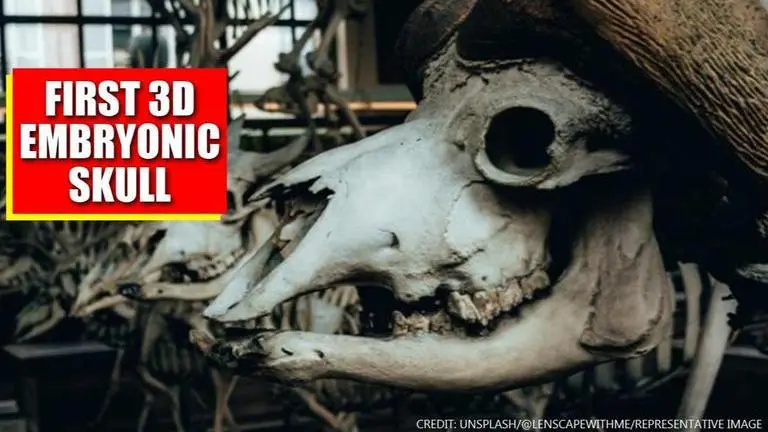Updated 28 August 2020 at 11:28 IST
Fossil Embryo reveals new details about ‘sauropods’ that lived 80 million years ago
Discovered 25 years ago, the Fossil Embryo of a sauropod dinosaur almost three centimetres in size provides insight into the facial anatomy of Titanosaurs.
- World News
- 3 min read

A rare dinosaur embryo discovered in Argentina preserved inside its egg has revealed new details about development and appearance of ‘sauropods’ that lived 80 million years ago on Earth. According to a study published by University of Manchester in the journal Current Biology, scientists made the first 3D preserved embryonic skull of a sauropod sauropodomorph based on the analysis of the discovered embryos of Auca Mahuevo that exhibited an unusual monocerotic and stereoscopic face for a ‘sauropod’.
Discovered nearly 25 years ago, the embryonic remains of a sauropod dinosaur almost three centimetres in size provides insight into the facial anatomy, neurovascular sensory system, partly calcified brain case, and size of the dinosaur group known as titanosaurs, the largest species to have ever walked the planet. As per the study the delicate embryo fossil had remained intact with cranium about 1.2 inches (three cm) that was 3 dimensional and hadn’t flattened during the fossilization. The embryos revealed that the Sauropods, the giant herbivores made famous as being 'veggie-saurs' in the 1993 film Jurassic Park, had a stereoscopic vision and a horn on the front of the face which was then lost in adulthood. Scientists called the fossil the “most complete and articulate skull known from any titanosaur, the last surviving group of long-necked sauropods on Earth.
Advertisement
"The preservation of embryonic dinosaurs preserved inside their eggs is extremely rare. Imagine the huge sauropods from Jurassic Park and consider that the tiny skulls of their babies, still inside their eggs, are just a couple of centimetres long,” Dr John Nudds from The University of Manchester said.
Nudds added, “We were able to reconstruct the embryonic skull prior to hatching. The embryos possessed a specialised craniofacial anatomy that precedes the post-natal transformation of the skull in adult sauropods. Part of the skull of these embryonic sauropods was extended into an elongated snout or horn, so that they possessed a peculiarly shaped face.” The embryo also helped scientists find the process of dinosaur baby hatchings that provided new information about the sauropodomorph reproduction. The elongated horn on dinosaur was used as 'egg tooth’ that assisted the babies to hatch from the shell, the research found.
[The New Specimen of Megaloolithid Egg Containing the 3D Preserved Skull of a Titanosaurian. Credit: Current Biology Journal]
Advertisement
[Eggshell Microstructure. (A) The fragment of the original egg. (B) Radial thin section through the monolayered eggshell. (C) Inner surface of the eggshell. (D) The coalescent inner (mammillary) tips of the eggshell. (E) The same perspective in polarized light revealing deep resorption pits. Credit: Current Biology]
[Reconstruction of the Craniofacial Anatomy of the Titanosaurian Embryo. Credit: Current Biology Journal]
Nesting ground of titanosaurian found
The team of scientists performed virtual dissection of the fossil at the European Synchrotron Radiation Facility (ESRF) in Grenoble and used an acid preparation to dissolve the egg to obtain its embryo. Discovery of sauropod embryos also helped scientists find of an enormous nesting ground of titanosaurian dinosaurs built 25 years ago, discovered in Upper Cretaceous deposits of northern Patagonia, Argentina.
Published By : Zaini Majeed
Published On: 28 August 2020 at 11:28 IST




